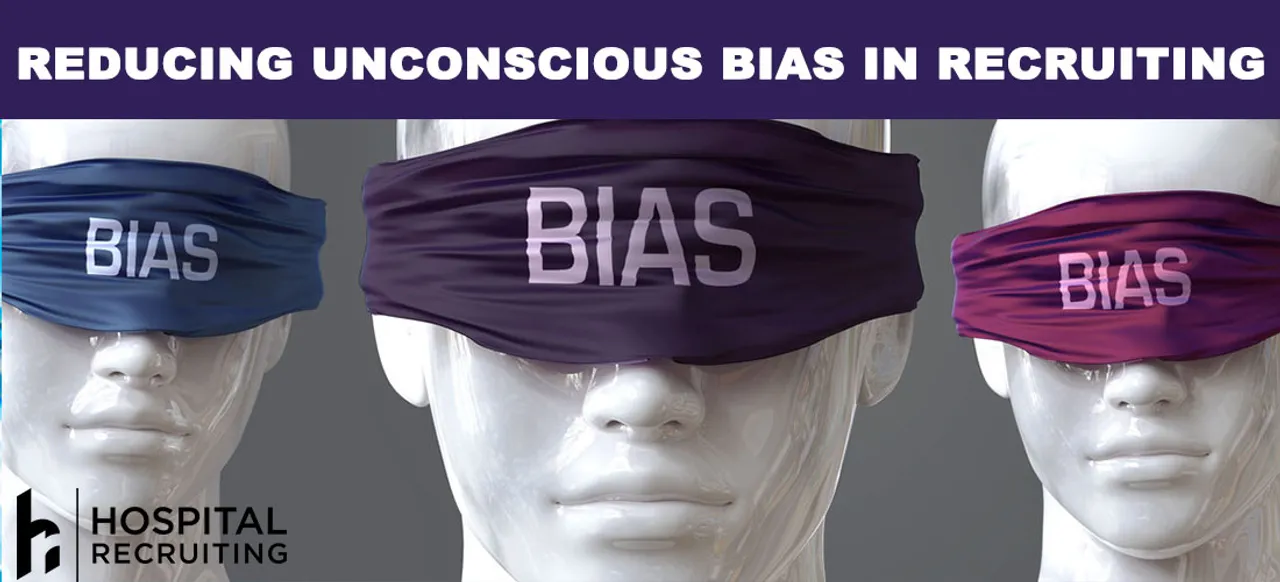Overcoming Unconscious Bias in Healthcare Recruitment

In healthcare recruitment, unconscious bias may be limiting the number of candidates you select as well as the quality of talent from which you can choose. Whether we admit to them or not, we all carry biases. The challenge for healthcare recruitment professionals may be to recognize any biases currently affecting your ability to hire, then overcome them for the future.
In addition to limiting the number of candidates, unconscious bias may be negatively impacting diversity and inclusion efforts. In healthcare particularly, diversity is critical to accurately mirror the community you serve. When bias limits your choices, patient care may suffer. There are biases for and against when it comes to hiring. Here are some worth looking into.
The pro biases…
Recruitment professionals may be more impressed with graduates from one school over another, or even graduates from their own alma mater. That alone can be limiting your options. If you’ve been successful hiring talent from a particular school, they may be your first choice when recruiting. The pattern can repeat, continuing to net talent that suits your needs, works well within your institution, and is retained for the long term. This success story shouldn’t be underrated, but who are you missing by limiting your choices? Expanding your reach by overcoming the bias for that particular school could mean even more successful recruitment and hires.
Bias can go beyond what appear to be practical terms. It’s human nature to gravitate toward like-minded people; it’s called affinity bias. We look for people with similar or likeable traits and put them at the top of our lists. It can be difficult to uncover this bias; often we have to ask why we chose one candidate over another, particularly when their credentials and experience are similar. A deeper dive into why you made a specific selection may uncover an affinity bias you didn’t know existed.
…and the anti-biases
One of the most common biases is exclusion of candidates based on the most superficial data: their names. Research suggests that having an easy to pronounce or recognize name nets a job seeker an advantage when it comes to scoring an interview. There may be an assumption that the candidate is not fluent in English, or that their education level is below par. Removing this bias alone often results in a larger, more diverse applicant pool and a more inclusive workplace.
For healthcare providers, recruiting or avoiding recruitment of foreign medical school graduates often reveals unconscious bias. It’s estimated that over 25% of all physicians in the US are foreign born. For recruitment professionals, the hurdles may be practical: concern over language barriers, licensing, certifications and work permits. Beyond those, there may be bias against schools. For institutions desperate to maintain staffing levels for nursing professionals, for example, biases might be keeping your facility from the level of patient care you expect.
Where a candidate went to school can be another unconscious bias limiting recruitment efforts. A 2019 study found significantly more qualified students at tier-two and tier-three schools than tier-one universities when hiring for IT professionals. They also found the top 10% of tier-two and three school outperformed their tier-one counterparts on the job. Similar ratios may hold for healthcare professionals. With fierce competition for talent from top tier institutions, many facilities may find better performers when they expand their reach.
Overall, GPA may be another misleading metric. Preference for a higher GPA could be excluding top talent. Depending on the school, grading scales can vary widely. It might be worth looking beyond this number bias when hiring.
How a candidate funded his/her education may be another unconscious bias. Many healthcare recruiters gravitate to candidates who were able to focus full-time on their education. A job seeker who was able to juggle work and school may perform better under pressure and be stronger at multi-tasking. Removing that bias could result in a wider, more diverse talent pool.
Ways to avoid bias
Some facilities are turning to screening software to help limit unconscious bias. These software programs prescreen candidates while removing all data that might lead to bias. Names and addresses are eliminated entirely, as are names of schools and other data. These ‘blind’ resumes are then submitted for interviews. This type of screening is a practical way to remove bias. It may also be helpful for recruitment professionals to compare who they would have chosen versus who the blind screening software chose. Recruiters may be able to spot some of their unconscious biases in the process.
When healthcare recruitment professionals examine how unconscious biases may be limiting their reach into the talent community, they’re better able to meet the needs of their institution. The challenge is to recognize bias and set it aside for the good of the facility.
Related Posts
